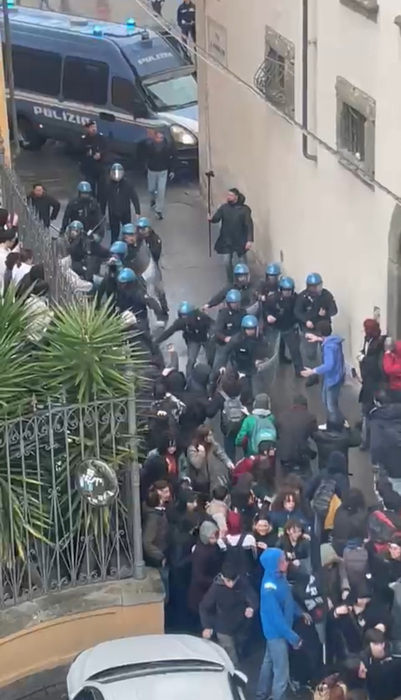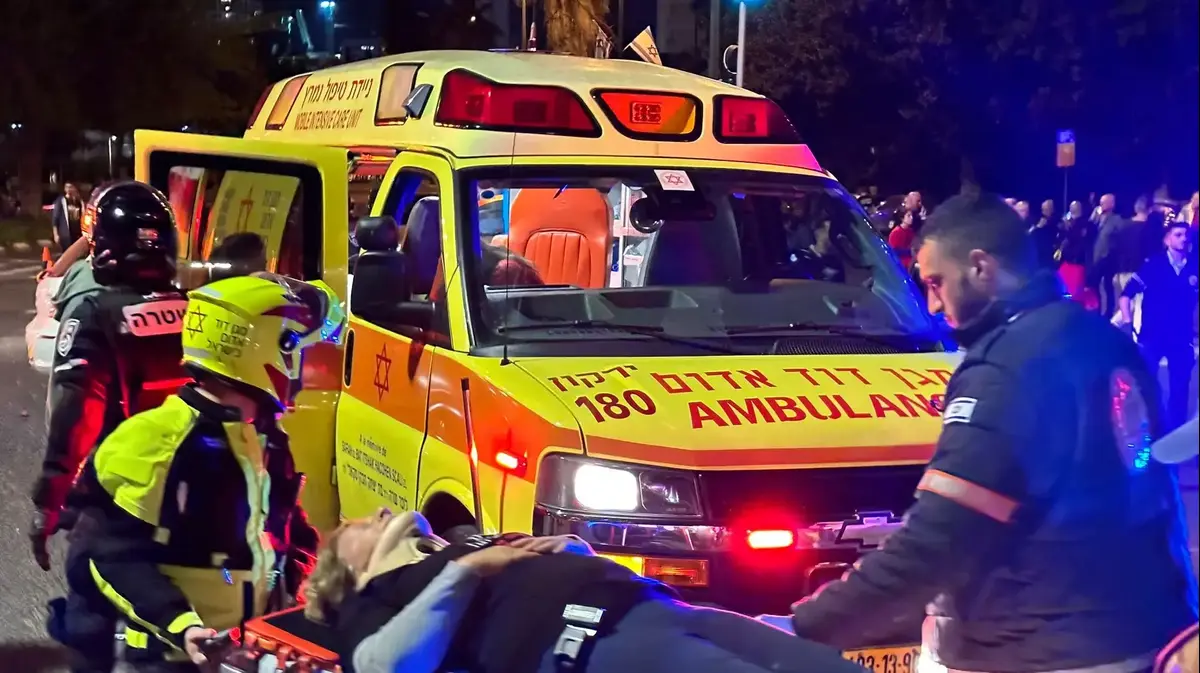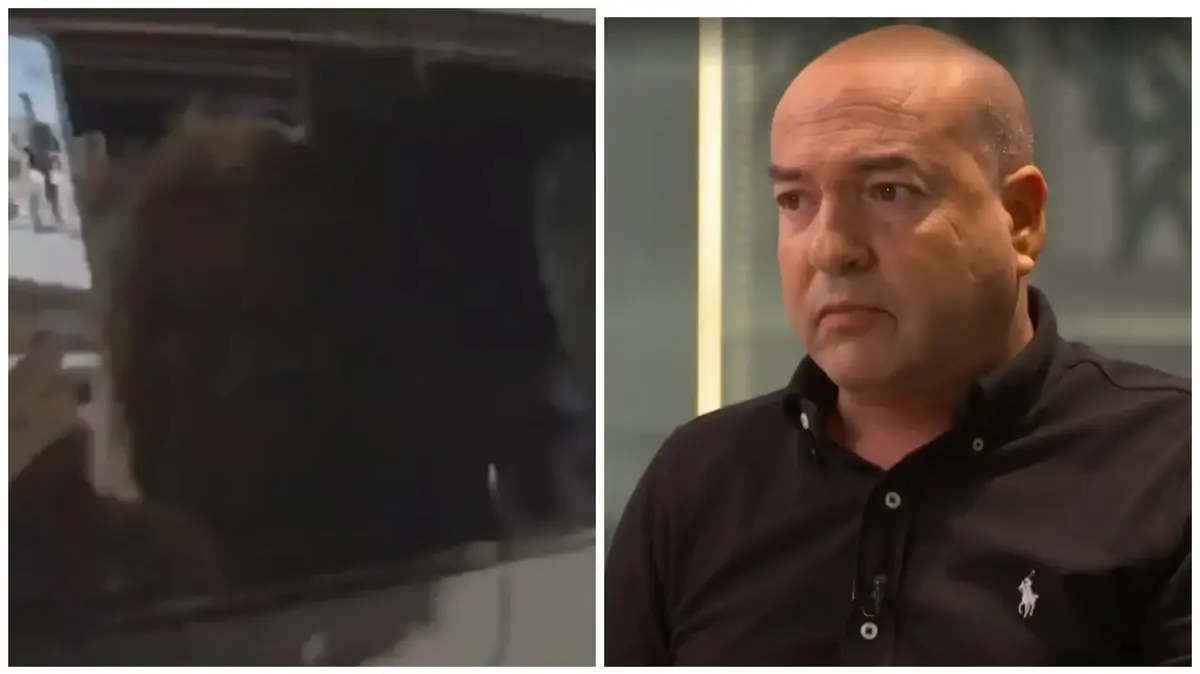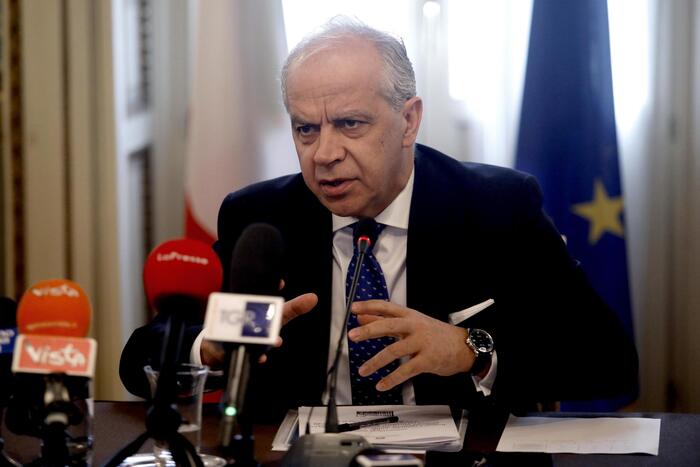In mid-December, with the country in full eruption, Dina Boluarte, who had then been president of Peru for a week after succeeding the ousted Pedro Castillo, told a wounded non-commissioned officer that the attacks she had suffered "were not acts of protest, but terrorism."
The woman who during the 2021 elections accused her opponents of terrifying her candidacy for being a leftist, now used the same verbal weapon to disqualify the protesters who had risen up against her.
Protesters who, like her, came from Apurímac, an impoverished Andean region.
Terrorism is a specter that has hovered over Peruvian politics since the 1980s, when a major conflict broke out between terrorist groups and the Armed Forces.
A conflict that, according to estimates, killed 69,000 Peruvians.
An open wound of more than 40 years that has caused a deep split, where a group of citizens is viewed with suspicion due to the origins of its members, their slogans and their links with some institutions.
In this context, memory, truth and reconciliation are ideals so far far away.
Shortly before Christmas, 26 people were detained inside the premises of the Peasant Confederation of Peru, in Cercado de Lima.
They had come to the capital to participate in the marches seeking the advancement of general elections for 2023. According to the National Directorate Against Terrorism (Dircote) they found machetes, slingshots, nails and ski masks.
For this reason, a preliminary investigation was opened for the alleged crime against public tranquility in the form of terrorism.
Two years ago, the same police division led a mega-operation in which they captured more than 70 citizens for allegedly having ties to the Shining Path, the subversive organization that caused the most deaths in the last century.
But the operation fizzled out after a year and a half: the defendants were released for lack of evidence.
José Carlos Agüero: "Terruqueo makes you non-person"
The historian José Carlos Agüero often repeats that the history of his parents, who were hikers, is not exceptional.
He affirms that what is exceptional is that it has been the starting point of a discussion with nuances and, as far as possible, without stigma or prejudice, with the publication of his book
Los rendidos.
On the gift of forgiveness
(Institute of Peruvian Studies, 2015).
Agüero reflects on the threat of terrifying the other and why it has more malign purposes than racism.
“Choleo is a social control mechanism that discredits people and that could change if you let yourself be civilized, governed, and educated.
The terruqueo is not just social and cultural, but it is a political device.
Their goal is not just to discredit but to expel.
In the terruqueo there is nothing that can be overcome: you are an agent of evil.
The only thing that fits is your expulsion or elimination.
Leaving you inert, without the possibility of generating more danger.
The terruqueo makes you non-person ”, emphasizes the historian, National Literature Award in 2018.
During the recent protests there were more than 700 injured and 28 Peruvians died, 22 of them due to clashes with the forces of order.
None fell dead in Lima, but rather in regions of the mountains and the coast.
According to autopsies, their deaths were mostly caused by firearms.
And as has been verified in amateur videos, some were killed while helping the fallen, as is the case of the transporter and mechanic from Ayacucho, Edgar Prado Arango.
A police officer points towards a group of protesters in the Chao district, during a protest on December 15, 2022. Hugo Curotto (AP)
“Terruqueo alienates people, makes them vulnerable, paralyzes them and makes them bulletproof.
Why is it still so ingrained?
Because it works.
It is a matter of efficiency.
When a control device proves to work there is no reason to stop using it.
We have gone through a lot of processes of violence and, with so many deaths, it continues.
It was used a few weeks ago and it will be used next time”, says Agüero.
The historian realizes that the word terruco, which preceded the verb, was used in the 1980s to demonize the population of the Ayacucho region.
But it was only in the 1990s, with former President Alberto Fujimori, that there was sophistication to the point of promoting a policy of fear at the national level.
“Fujimori realizes these things and consciously prolongs the fear, even though the people who generated it were no longer present.
Shining Path was no longer a threat, but he needed it to justify his authoritarianism, ”explains Agüero.
In September 1992, with the capture of Abimael Guzmán, leader of Sendero Luminoso, the organization came to an end.
And, although Fujimori was not even aware of the operation, he turned it into one of his banners.
Carla Granados: "It should be criminalized to call someone a terrorist"
Historian Carla Granados served in the Army between 2012 and 2018. She was trained as a military historian by veterans of the counterterrorist war, a term that has never ceased to be used in the Armed Forces to refer to the period of the civil war.
From France, Granados shares her perspective on the complexity of dealing with memory in the military sphere.
She was also terrified for investigating and questioning the hegemonic truth of only one side of history.
Regarding the terruqueo, Granados maintains that there has been a migration from the language of the barracks to political language, where the other is not only stigmatized to minimize it, but also their death is invoked.
“In a war there is always a name for the other, and the terruco was used to identify an individual who has no rights, who is not Peruvian.
For a soldier trained in the counterterrorist war, a terrorist subject deserves death.
And he is credited with a series of attributes: he is a peasant and has links with the unions and with the left”, comments the historian.
Pedro Angulo, Dina Boluarte's fleeting prime minister -he barely lasted a week in office- linked the December demonstrations with Sendero Luminoso without any remorse.
“The tactic they are using is the same one that Sendero used.
They bring tall people who don't speak Spanish.
Who speaks Quechua or Aymara.
In part of the Protestants there are remnants of terrorists.
We have intelligence reports, ”he justified.
For his part, retired admiral and congressman, José Cueto, said he was aware of an intelligence plan to restore calm in the country that implied "eliminating these people."
“We already have them all identified.
Eliminate that it is not understood by killing but rather remove them from the political context ”, he was corrected immediately.
Carla Granados considers that within the Armed Forces there are groups that are more careful when it comes to terrifying others.
“There are officers with sensitivity to understand history, there are dissident memories.
But there are also hard factions that because of their ideologies see terrucos everywhere, ”she says without ignoring war psychosis, a disorder with psychological consequences.
“When a veteran survives the war, the war never leaves these people and can be triggered by violent political speech.
These emotions can surface again.
That is happening in Peru.
We see incessant manipulation,” she adds.
Protesters and riot police during a protest to demand the release of Castillo, on December 14, 2022, in Arequipa.
Fredy Salcedo (AP)
On August 28, 2003, the final report of the Truth and Reconciliation Commission (CVR), a working group commissioned to investigate this painful chapter for the country, was made public.
The document concluded that there was a "systematic and widespread violation of human rights" by the Armed Forces, and also called this period "internal armed conflict", generating the rejection of the military.
“There is no consensus on the definition.
I think that this is the key to why one terrifies the other, because within military language it is only conceived as a counterterrorist war.
It is a military paradigm, a doctrinal and even ideological training,” says Granados.
The historian, who published an allusive essay in the book
La violencia que no cesa
(Cardinal Point, 2021), firmly believes that there should be a law to punish those who terruquer left and right.
“It should be criminalized.
You cannot violate anyone with that denomination.
You call someone a terrorist and they become a military target.
This level of verbal violence that justifies death is inconceivable ”, she concludes.
Lurgio Gavilán: "All of us from Ayacucho were terrucos in the 80s"
The academic Lurgio Gavilán was born in Huamanga, the most stigmatized city in the most stigmatized region: Ayacucho, where Abimael Guzmán incubated his doctrine influenced by Marxism, Leninism and Maoism.
He belonged to the army of Sendero Luminoso when he was a teenager and was later recruited by the Army.
He later became a priest and, finally, an anthropologist.
Gavilán, like José Carlos Agüero, processed his drama and exposed it in a now famous book:
Memoirs of an unknown soldier
(Instituto de Estudios Peruanos, 2012).
Together with his family, he lived through the military repression last month in Ayacucho.
He heard the screams, the helicopter blades, the bullets and the crying.
“Ayacuchana history is a continuation of the violence of very long standing.
All of us from Ayacucho were terrucos in the 80s. Many changed their names because of the stigma.
But over time we have created healing spaces to continue living.
We talk to animals, we have death rituals and also carnivals.
They help us keep going,” he explains.
At the age of 12 he was recruited by terrorism.
Until three years later he was taken prisoner by a regiment.
They spared his life and integrated him into the barracks.
One of Lurgio Gavilán's clearest memories is the military song that he was forced to learn: “little terruquito, where are you?
If I catch you I will eat your head and bathe myself in your blood."
A ritual that was part of his indoctrination and that made him understand that he now belonged to the other side.
“The military say that to give themselves courage,” he adds.
Gavilán defines terruqueo as a lethal weapon to demonize the other.
And with that slow voice and that unusual fortitude with which he talks about horror, he explains why a right-winger cannot be considered a terruco: “Power builds the truth and the system creates enemies.
It's very wicked.
That's why we need to listen to the other.
There's always hope.
But we must look at ourselves, be a mirror”.
Follow all the international information on
and
, or in
our weekly newsletter
.
Subscribe to continue reading
Read without limits
Keep reading
I'm already a subscriber








